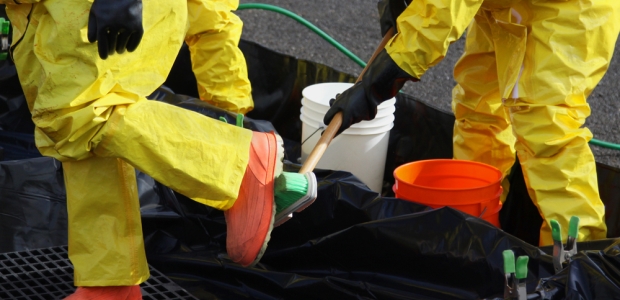
NIOSH Touts DERMaL eToolkit to Aid Responders
They can quickly retrieve important information about chemicals' health effects while in the field, explains Naomi Hudson, DrPH, MPH, a health scientist in NIOSH's Education and Information Division.
A new post to the NIOSH Science Blog from Naomi Hudson, DrPH, MPH, a health scientist in NIOSH's Education and Information Division, showcases the DERMaL eToolkit, a tool that can provide information about chemicals to emergency responders while they are working in the field. Responders often can be exposed to dangerous chemicals on their skin, she explains, adding that "[d]espite the availability of numerous high-quality resources designed to guide emergency management and operations personnel, data gaps continue to exist on specific hazards or scenarios. Available resources contain an overwhelming quantity of data on inhalation exposures, but data related to dermal exposures are more challenging to find. Dermal contact is an important exposure pathway and can present significant health risks."
Accessed by a responder on his or her phone or tablet, the DERMaL eToolkit will offer information and tools about health effects, exposure assessment, control measures, and medical management. It is organized by 1) incident phase, 2) information categories, and 3) resource types, she writes.
Subject matter experts with expertise in industrial hygiene, emergency response, and law enforcement rated the resources included in the eToolkit's database in order to ensure the most relevant resources of the search criteria appear at the top of the list, writes Hudson, and "hot buttons" are included for PPE, DECON, and health information "because these terms were determined to be the most likely to be used during the response phase. Other tools on the homepage that could be utilized include a dermal checklist for assessing risks during response activities."
The DERMaL eToolkit was developed by NIOSH as a companion to Chemical Hazards Emergency Medical Management (CHEMM), and a she highlighted a dermal checklist for assessing risks during responses involving chemicals.
Created using responsive design, so that it minimizes the need for resizing and scrolling across various devices, the eToolkit was prepared by the Oak Ridge Institute for Science and Education through an interagency agreement with the U.S. Department of Energy. A list of those responsible for the DERMaL eToolkit is provided at https://dermal.nlm.nih.gov/about.php.